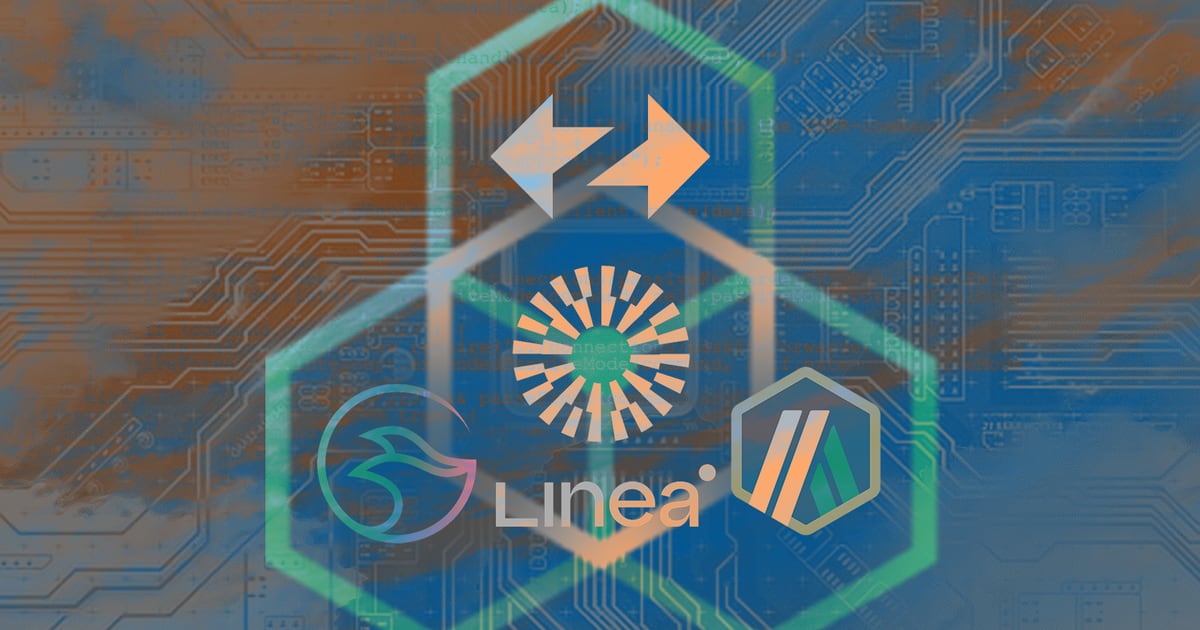- Ethereum’s focus on L2s comes at a cost, spreading liquidity across dozens of blockchains.
- Layer 3 blockchain ZkLink Nova, which aggregates liquidity across five L2s, launched Monday.
Ethereum’s mass market appeal rests on so-called layer 2 blockchains: faster, cheaper blockchains that funnel into Ethereum, letting users dodge its notoriously high transaction fees.
There are more than 40 of these layer 2 blockchains, according to one estimate. Most are islands unto themselves: although protocols like PancakeSwap, a decentralised exchange, can be found on several layer 2 blockchains, assets on the many versions of PancakeSwap are siloed.
A new layer 3 blockchain — a layer 2 for layer 2s — aims to fix that.
ZkLink Nova, which launched Monday, aggregates liquidity across five layer 2 blockchains: zkSync, Linea, Arbitrum, Manta, and Mantle.
Stay ahead of the game with our weekly newsletters
“The point is to deploy products that can, sort of, unify liquidity and users,” Declan Fox, head of business development at Linea, told DL News.
That means that an application deployed on those blockchains effectively shares assets. This larger pool of assets — or deeper liquidity, in market-speak — should make it easier to execute large trades without affecting an asset’s price.
The L2 boom
Like all blockchains, Ethereum groups transactions into blocks, then appends them to an immutable ledger. Its transaction fee reflects the demand for space in each block, spiking along with user activity.
But a spike in activity can send the cost of a single transaction well above $100, an astronomical sum for the average investor.
Join the community to get our latest stories and updates
Developers have bet the most convenient road to mass market appeal goes through cheaper layer 2 blockchains, which batch transactions before appending them to Ethereum.
That plan is coming to fruition. There are more than 40 layer 2 blockchains, according to L2BEAT, and another 35 in development.
Existing layer 2 blockchains have processed almost twice as many transactions as Ethereum itself over the past year, according to data collected by Jack Gorman, a data scientist at venture capital firm Variant Fund.
Ethereum users have enjoyed massive savings: The average cost to swap tokens on Ethereum was just under $17 Monday morning, according to l2fees.info. It was between $0.68 and $2.16 on the major layer 2 blockchains the website tracks.
layer 3 blockchains take the concept a step further, creating a sort of blockchain-based Russian nesting doll in which each layer is cheaper than the last.
zkLink Nova
Unlike the few existing layer 3 blockchains, zkLink Nova will be general purpose rather than application specific.
ZkLink spokesman Neil Liew said Nova would offer “real interoperability.”
“With Nova there is no need to bridge assets across chains, because the same ERC-20 token on zkSync and Linea, for example, is represented as a single token on zkLink Nova,” he said. “Nova simplifies DeFi by presenting a unified ecosystem for users and DApps, promoting a seamless blockchain experience.”
While it aggregates transactions across several blockchains, it settles on Linea, an L2 that also runs on zero-knowledge technology. ZK technology creates “proofs” that are posted to Ethereum for verification.
“You get additional savings on the settlement cost,” Fox said.
“Rather than having to verify your proof directly on Ethereum, which is costly … what you’re doing now is, you’re actually settling on Linea, and Linea gas price is orders of magnitude cheaper than Ethereum.”
Liew said zkLink will add other L2 blockchains in the future, and should be considered a complimentary, rather than competitive, product.
“We are facilitating more user flow and liquidity flow into their chains and enhancing capital efficiency between the chains,” he said.
ZkLink’s three-step roadmap includes the eventual launch of ZKL, a governance token issued to incentivize a decentralised sequencer — the technology that orders transactions on layer 2 and layer 3 blockchains.

